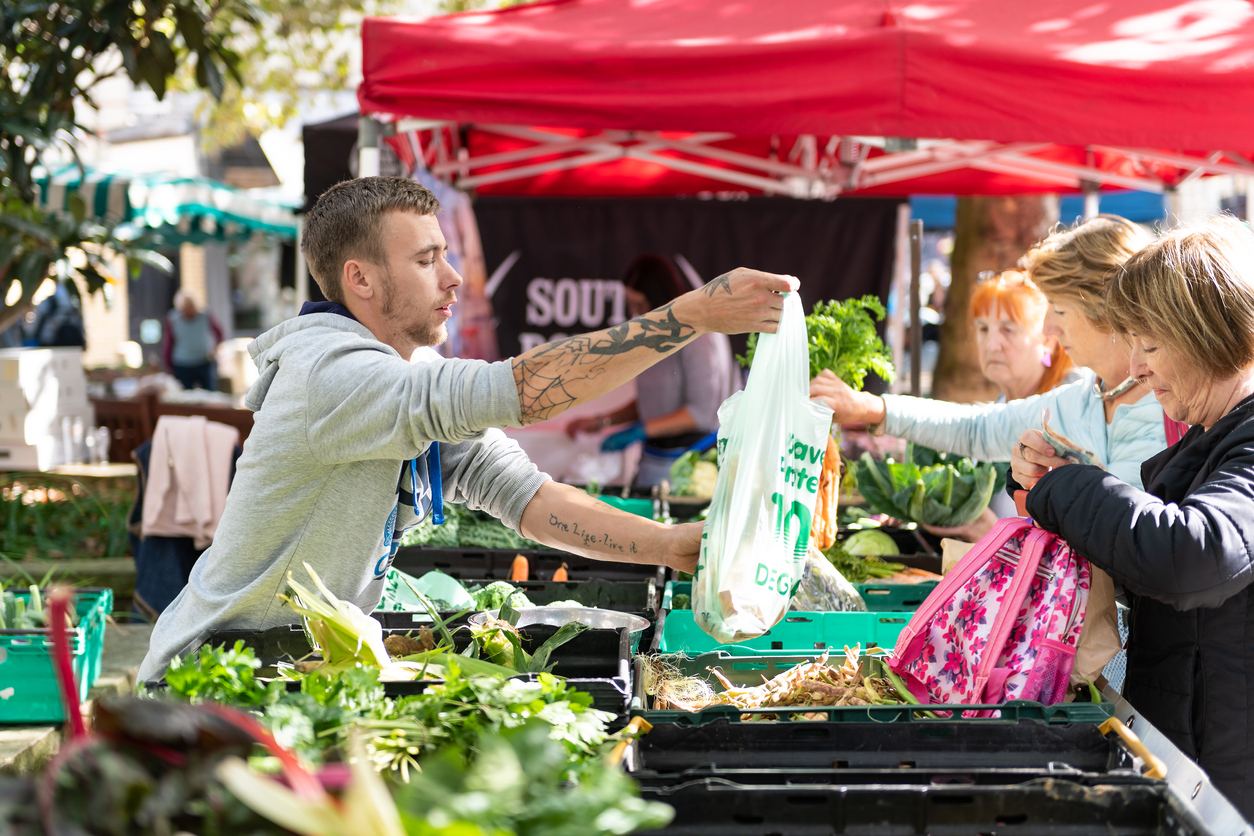Empty supermarket shelves have been a scary symptom of the COVID-19 crisis. From daily staples to sneaky snacks, we’re running low. Those shelves reveal something we don’t normally need to think about: here in Wales, our dinners depend on imported food, supply chains, and distribution networks. Could panic at the shops have been averted if we ate more local food? Should Welsh produce be prioritised in the future?
Our diets are well travelled. Spanish tomatoes, Italian apples, avocados all the way from Guatemala … sugar, chocolate, coffee. The food supply is globalised. But COVID-19 threatens that supply. Of course, the virus itself doesn’t affect food, but closed borders, restricted travel, absent workers and system capacities sure do. Meanwhile, lockdown practicalities mean we buy more to eat at home, and worry makes us put extra in our shopping baskets. As stocks dwindle, critical questions are being asked about how we feed ourselves. From harvest logistics and free cheese, to delivery rounds and veg for backyard gardeners, local food is in the limelight.
Support for eating local has long been rising, motivated by concerns about food security and sustainability. Climate change has already warned us to rethink the miles on our plates. Brexit continues to create uncertainties for Welsh farmers, amid complex trade negotiations. Together with fellow WISERD researchers Jesse Heley and Michael Woods, I’ve been tackling these issues in research for the Horizon 2020 ROBUST project. We’re examining what a rural-urban sustainable food system could and should look like, and comparing findings from Wales with ten other European countries.
The short answer is that sustainable food needs a long answer. From an urban perspective, we might imagine that, since food grows in fields, and Wales has plenty of fields, more could easily be grown. In reality, the crops that can grow depend on a combination of soils, topography and climate. In Wales, it’s hilly, rainy, and soils are poor. There are good reasons why tea grows in Darjeeling, not Dolgellau. That’s exactly why our food supply isn’t local – people have long traded tasty things. Chocolate caused a sensation when it was brought to Britain in the 17th century.
We do have wonderful Welsh produce. Welsh lamb, for example, has been awarded coveted PGI (Protected Geographical Indication) status, along with champagne. But although the Welsh Government rightly advocates developing our food sector, Wales is not self-sufficient and eating exclusively Welsh would be bad news for vegans – or anyone who likes baked beans.
The trouble is, ‘local’ is trickier than it seems. Take Monmouthshire, where the County Council is actively investigating how to use procurement to put more local food on public plates. Hereford in England is much closer than Haverfordwest, so which is more local? There’s processing, too. Welsh farmers produce plenty of beef and lamb, but Wales has few slaughterhouses and packing plants (which mostly rely on EU labour). If local meat was made into sausages elsewhere, are the sausages local to here or there? What about locally grown food that has been through national distribution networks before arriving back again?
These conundrums haven’t become less complicated the more the ROBUST team has studied them. Practically speaking, what gets called ‘local’ ultimately depends on the objective. Supporting farmers, creating food sector jobs, and reducing carbon emissions, for example, are separate objectives that can give subtly different definitions of ‘local’. COVID-19 is making a secure food supply into a crucial objective, and that objective will have its ‘local’, too. But there will be compromises and consequences – and plenty more tricky questions.
Local food could not have stocked our supermarket shelves, simply because Wales doesn’t produce the volume or variety. We could – and we should – prioritise our food system for future generations. Yet eating local is no simple solution. Rather than what we eat and where it comes from, we need to keep thinking about why our food matters and how change occurs in interconnected ways.
Image credit: ablokhin

